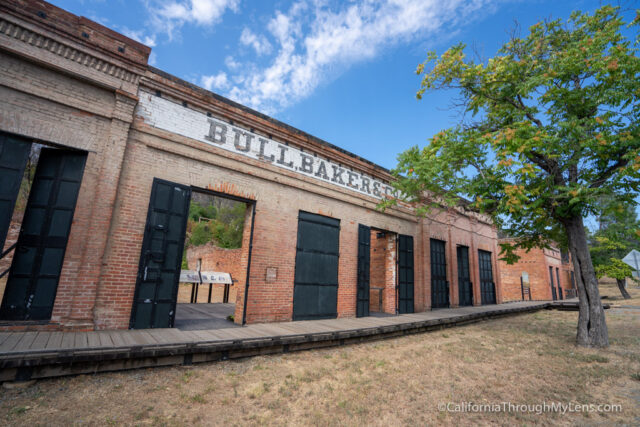Preserved Gold Rush Town & Museum

The historic park hosts educational programs, historical reenactments, and special events. We provide porta potty rentals to ensure visitor comfort during outdoor programs and gatherings.
Call (530) 245-8998 for Event RentalsShasta State Historic Park preserves the ruins and remaining buildings of the once-thriving Gold Rush town of Shasta, California. Located just west of Redding, this historic site offers visitors a glimpse into California's gold mining past and the boom-and-bust cycles that shaped the American West.
Founded in 1849, Shasta was once known as the "Queen City of the Northern Mines" and served as the county seat of Shasta County from 1851 to 1888. The town was a major supply center for gold miners heading to the northern California goldfields and was a crucial stop on the California-Oregon Trail. At its peak, Shasta had a population of several thousand residents and was one of the most important towns in Northern California.
The restored 1861 courthouse now serves as a museum, featuring exhibits on local history, Gold Rush artifacts, and period furnishings.
A restored 1850s general store that showcases the commercial life of the Gold Rush era with authentic merchandise and displays.
Remnants of numerous brick buildings line the historic main street, including former hotels, stores, and businesses from the 1850s-1880s.
The historic cemetery contains graves dating from the 1850s, telling the stories of early settlers, miners, and their families.
The courthouse museum houses an extensive collection of Gold Rush artifacts, including mining equipment, period clothing, furniture, and personal belongings of early settlers. Interactive displays tell the story of daily life during the gold mining era, from the excitement of discovery to the hardships of frontier living.
Guided tours and hands-on activities help students learn about California history, the Gold Rush, and 19th-century life.
Historical reenactments, demonstrations, and special events bring the Gold Rush era to life throughout the year.
Docent-led tours provide in-depth information about the town's history, architecture, and the people who lived here.
The park's archives and collections support historical research and genealogical studies for scholars and family historians.
Shasta's decline began in the 1880s when the Central Pacific Railroad bypassed the town in favor of Redding. The county seat was moved to Redding in 1888, and many businesses and residents followed. By the early 1900s, Shasta had become a ghost town, with only a few residents remaining among the crumbling brick buildings.
The site was designated as a state historic park in 1945 to preserve the remaining structures and interpret the area's Gold Rush history. Ongoing preservation work maintains the historic buildings and stabilizes the brick ruins, ensuring future generations can learn from this important chapter in California's past.
Throughout the year, Shasta State Historic Park hosts special events including Gold Rush Days, historical reenactments, educational workshops, and community gatherings. These events often require additional facilities to accommodate visitors and participants comfortably.
Planning an educational program, historical reenactment, or special event at Shasta State Historic Park? We provide clean, reliable porta potty rentals to supplement existing facilities and ensure visitor comfort.
Call (530) 245-8998 to discuss your event restroom needs!